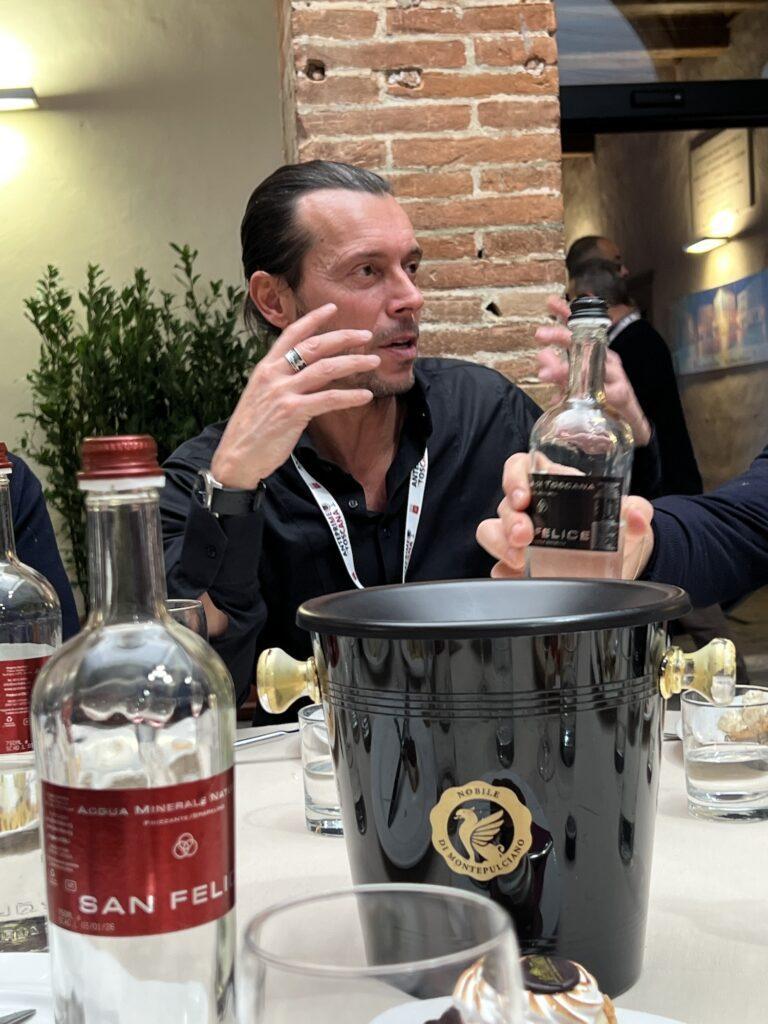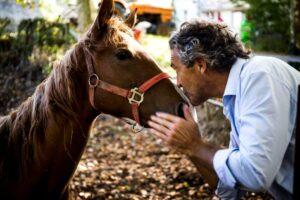Vino Nobile di Montepulciano Tasting
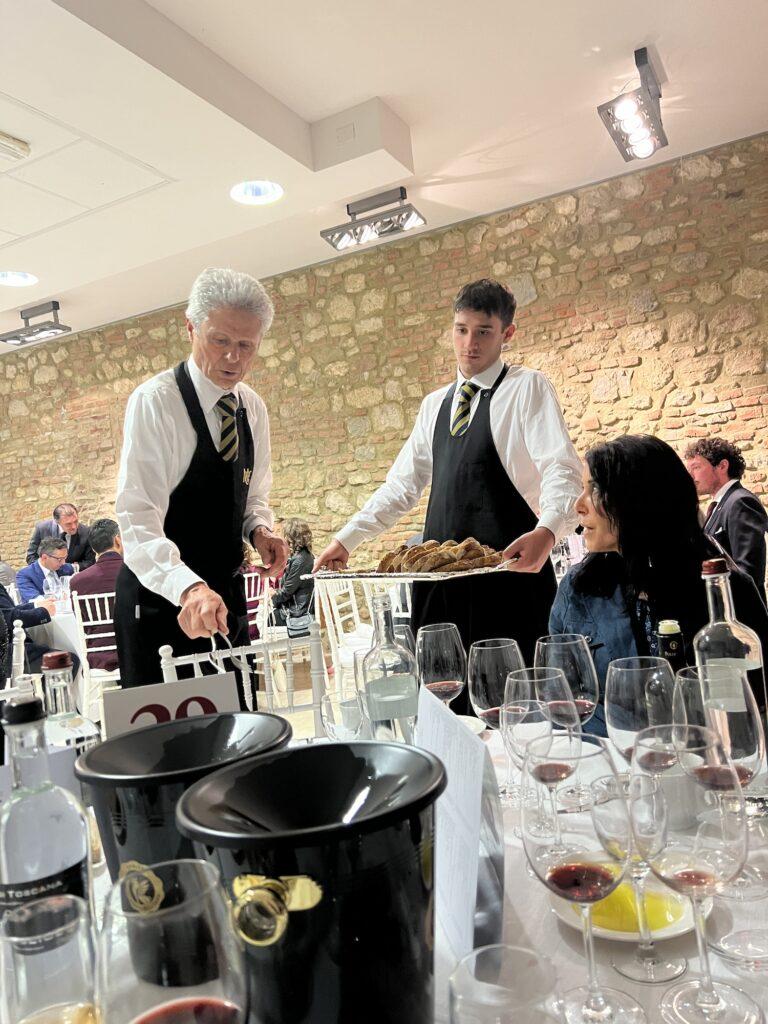
The Red Tuscan Wines of Vino Nobile di Montepulciano
Vino Nobile di Montepulciano, a revered red wine from Tuscany, Italy, boasts a rich history that intertwines with the evolution of Italian winemaking. This wine, known for its robust flavor and long aging potential, originates from the picturesque hills surrounding the medieval town of Montepulciano.
The Allure of Vino Nobile di Montepulciano

Though delicious, Vino Nobile di Montepulciano isn’t just a wine – it’s a journey through time and space. I’ve studied this grape and region for more than a decade in my Wine and Spirits Educational Trust diploma education (WSET). Then in the Masters of Wine education program, we studied the Vino Nobile di Montepulciano in comparison with the other regions of Tuscany.
Now, that I’ve traveled to this region a few times now, I love visiting the famous fortress, where the tastings with producers, Masterclasses, and other activities are held. And I love seeing the Etruscan ruins beneath the transparent flooring of the wine shop within the Fortress.
The Vino Nobile di Montepulciano Grapes
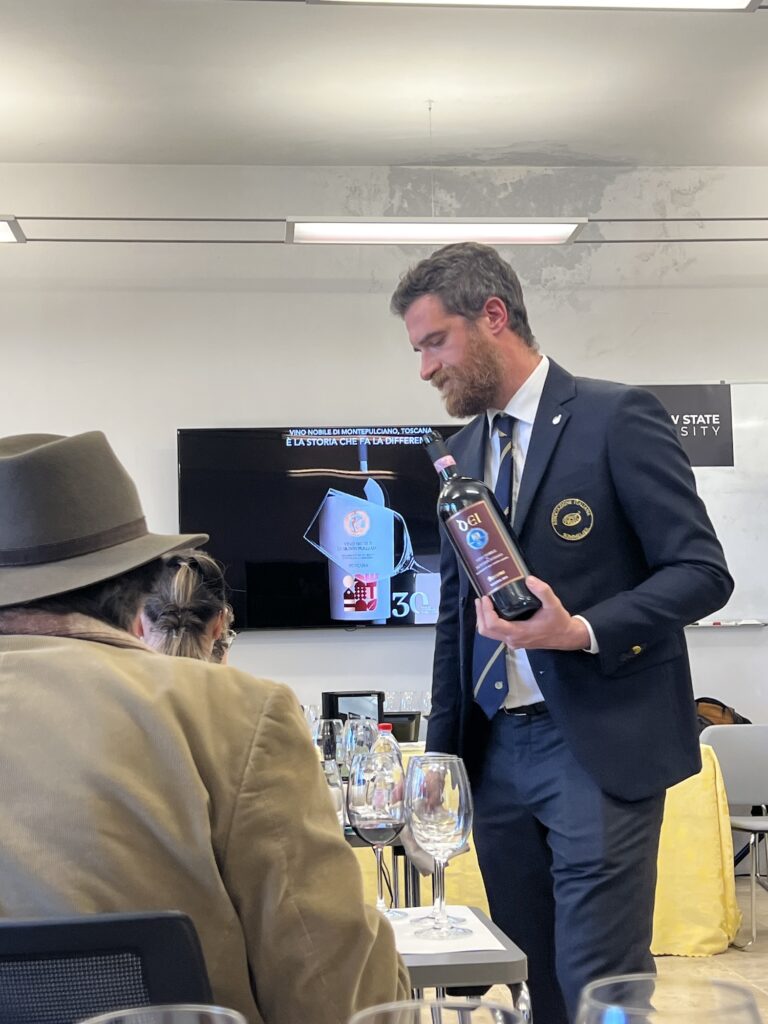
Unlike its name might suggest, it is not made from the Montepulciano grape but primarily from Sangiovese, locally known as Prugnolo Gentile. The history of Vino Nobile di Montepulciano is a testament to the traditions, regulations, and innovations that have shaped Italian viticulture over centuries.
The Vino Nobile di Montepulciano Grapes
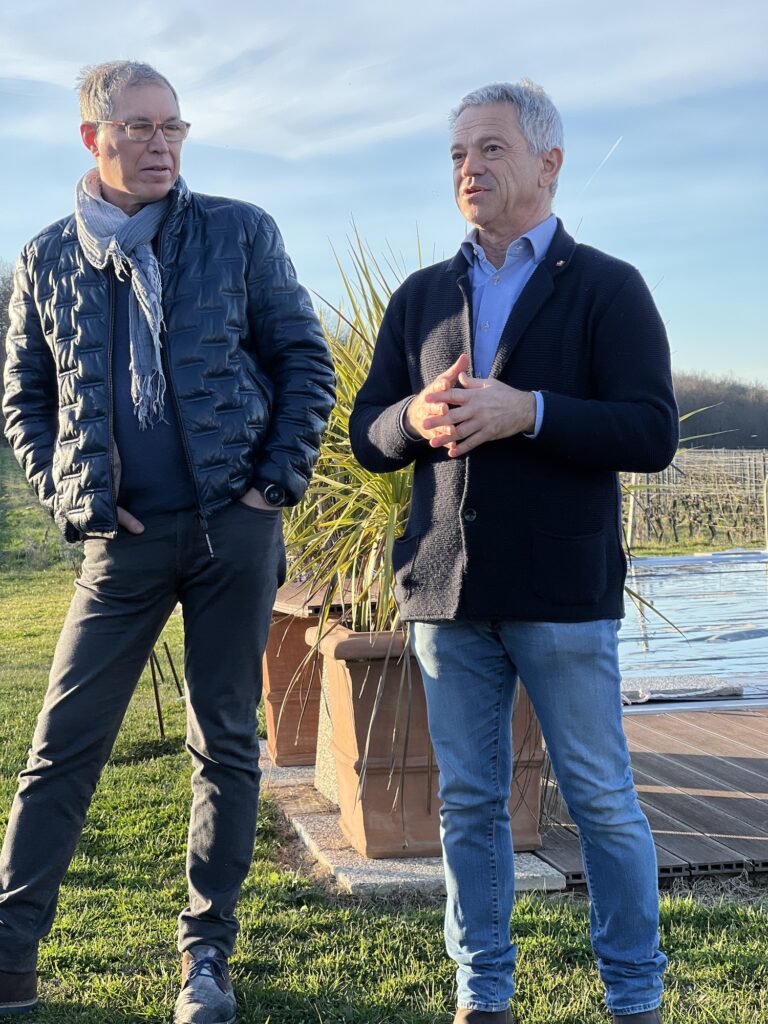
Unlike its name might suggest, it is not made from the Montepulciano grape but primarily from Sangiovese, locally known as Prugnolo Gentile. The history of Vino Nobile di Montepulciano is a testament to the traditions, regulations, and innovations that have shaped Italian viticulture over centuries.
Historical Overview
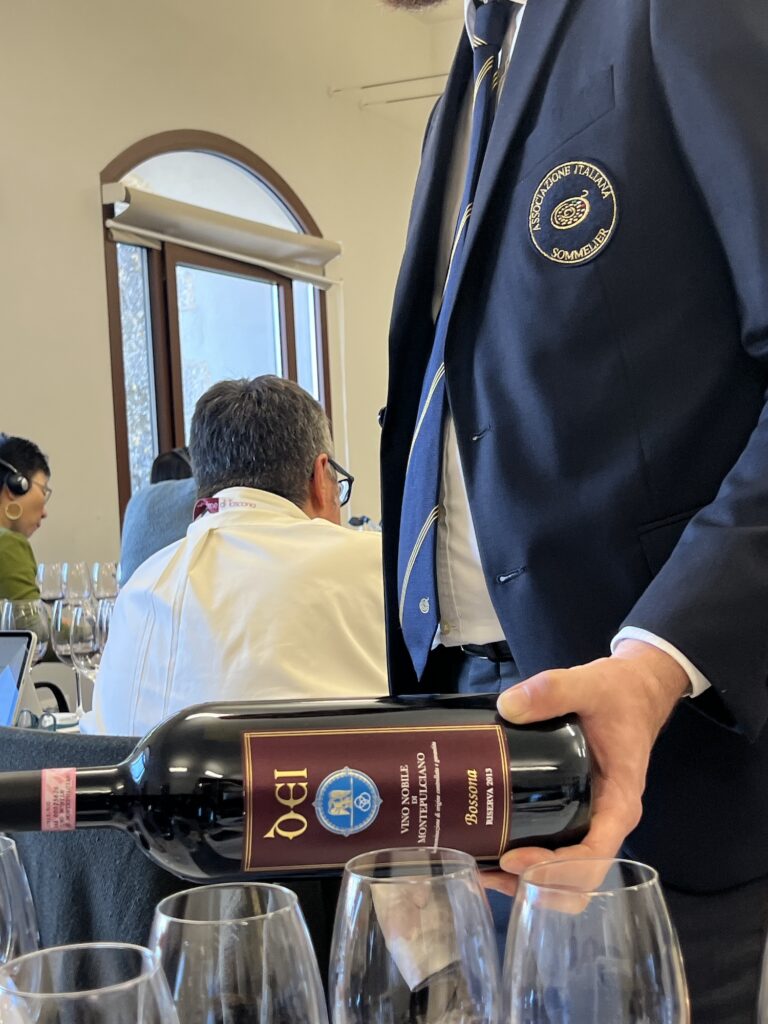
The roots of Vino Nobile di Montepulciano stretch back to the early Etruscan settlements, which were among the first to cultivate vines in the region. However, the first documented mention of the wine dates to the late 14th century. Its reputation steadily grew, and by the 17th century, it was considered one of the finest wines in Italy, famously referred to as the “king of all wines” by poet Francesco Redi in his 1685 work “Bacchus in Tuscany.”
Throughout the centuries, Vino Nobile di Montepulciano was cherished by aristocrats and popes, symbolizing the high status of Tuscan winemaking. The wine’s production was traditionally small-scale, with meticulous attention to quality, a practice that has been preserved to this day.
Varieties and Production
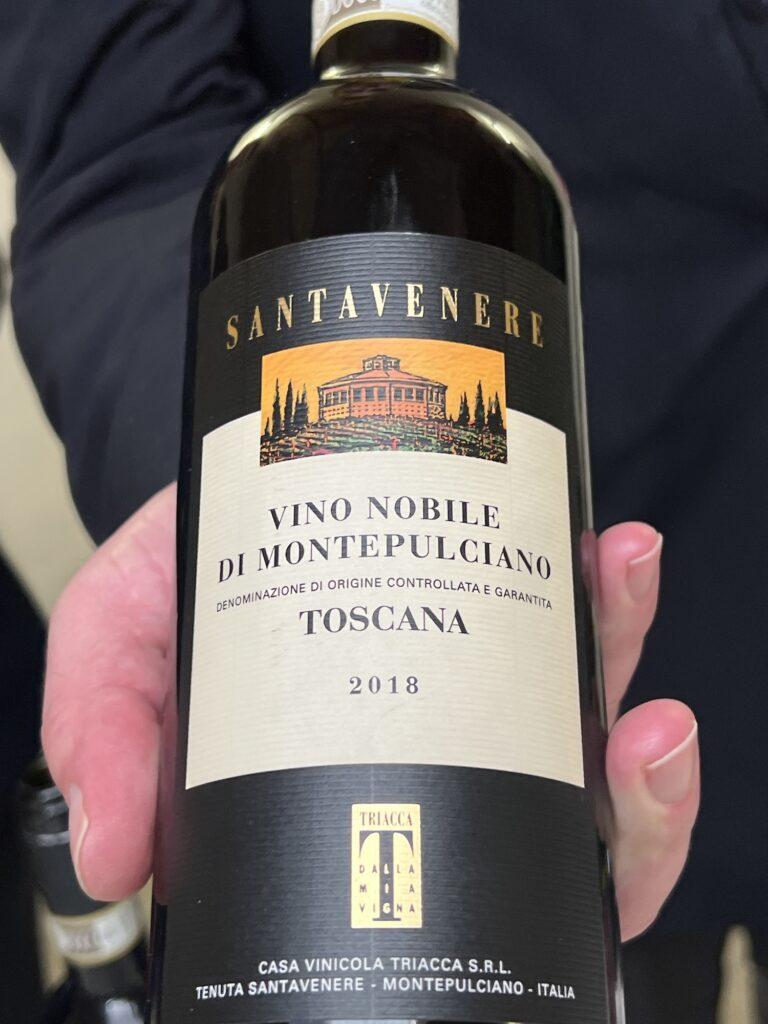
Central to the identity of Vino Nobile di Montepulciano is the Sangiovese grape, accounting for at least 70% of the blend. The remainder may include local varieties such as Canaiolo Nero, Colorino, and Mammolo, as well as a limited allowance for international varieties like Merlot and Cabernet Sauvignon. This blend results in a wine that reflects the terroir of Montepulciano, characterized by its balanced structure, aromatic complexity, and potential for aging.
The production process of Vino Nobile di Montepulciano adheres to strict regulations to ensure its quality. The wine must age for a minimum of two years (three years for the Riserva classification) before release, with at least one year in oak barrels. This aging process contributes to the wine’s depth and character, allowing its flavors to mature and harmonize.
Classifications
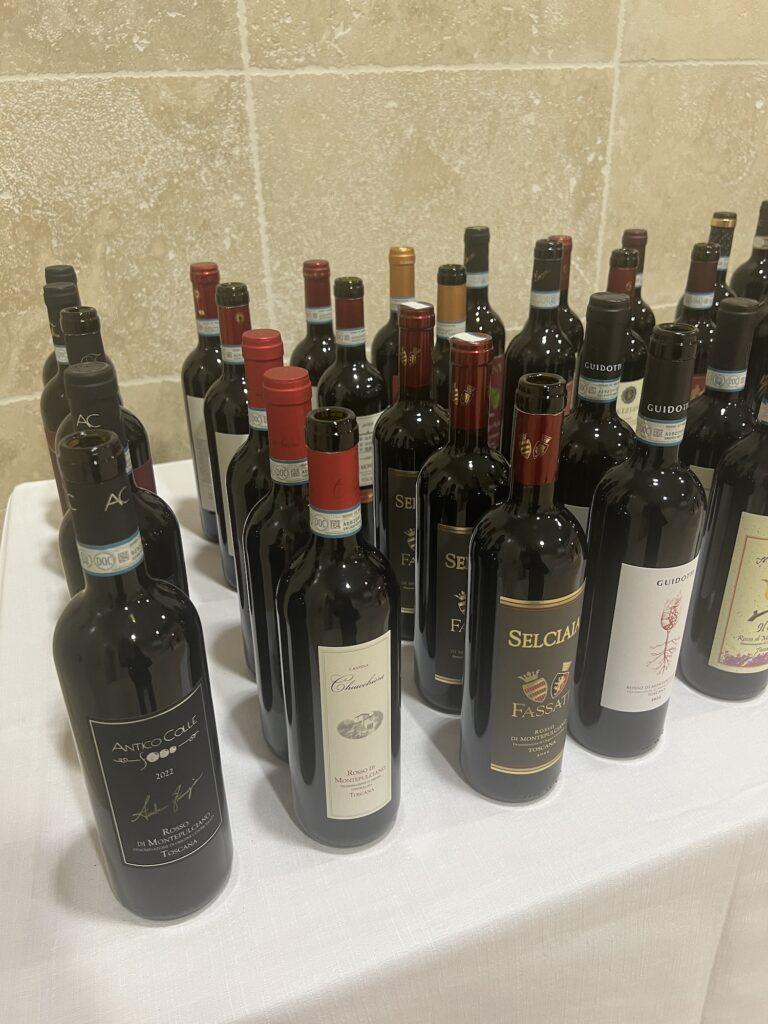
The classification system for Vino Nobile di Montepulciano helps consumers understand the quality and aging of the wine. There are two primary classifications:
Vino Nobile di Montepulciano DOCG: This designation signifies that the wine has met the rigorous standards of the Denominazione di Origine Controllata e Garantita, Italy’s highest wine quality certification. It ensures that the wine is produced within the specified region using the approved grape varieties and adhering to the aging requirements.
Vino Nobile di Montepulciano Riserva DOCG: Wines labeled as Riserva must undergo at least three years of aging, including time in oak barrels, which enhances their complexity and longevity. This classification is reserved for the finest wines that can benefit from extended aging.
Additionally, the region produces a lighter, more approachable style of wine known as Rosso di Montepulciano. While not subjected to the same aging requirements as Vino Nobile, Rosso di Montepulciano offers a glimpse into the region’s winemaking traditions with a more immediate drinkability.
Modern Evolution and Challenges
The 20th century marked a period of significant evolution for Vino Nobile di Montepulciano. The establishment of the DOCG status in 1980 was a pivotal moment, placing the wine among the elite of Italian winemaking. This recognition spurred a modernization in practices, including improvements in vineyard management, winemaking techniques, and a focus on sustainability.
However, the journey has not been without challenges. The competition from other Tuscan wines, such as Chianti Classico and Brunello di Montalcino, has pushed producers in Montepulciano to continuously innovate and elevate the quality of their wines. Climate change also presents a growing concern, with winemakers adapting to shifting weather patterns and exploring sustainable viticulture practices to preserve the integrity of their vines and wines.
Conclusion
Vino Nobile di Montepulciano embodies the essence of Tuscan winemaking, with a history that showcases the region’s dedication to quality and tradition. From its aristocratic beginnings to its current status as a globally respected wine, Vino Nobile has evolved while maintaining its unique identity. The wine’s complex flavors, aging potential, and the meticulous care in its production reflect the rich heritage and the vibrant future of Montepulciano’s winemaking. For American wine lovers, exploring the different classifications and vintages of Vino Nobile di Montepulciano offers a fascinating glimpse into the heart of Tuscany, where the blend of history, culture, and viticulture
